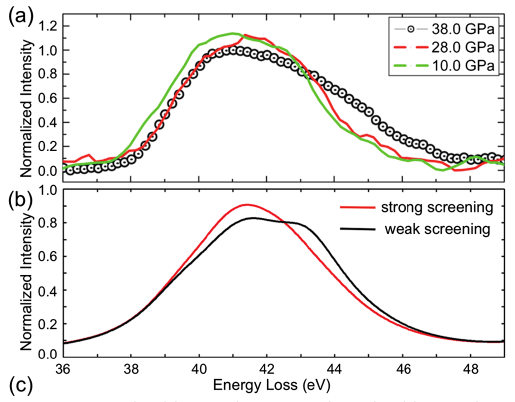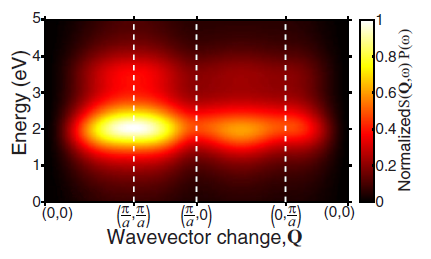| Highlights |
|
A novel high-pressure monoclinic metallic phase of V2O3 Y. Ding, C.-C. Chen, Q. Zeng, H.-S. Kim, M. J. Han, M. Balasubramanian, R. Gordon, F. Li, L. Bai, D. Popov, S. M. Heald, T. Gog, H. Mao, and M. van Veenendaal, Phys. Rev. Lett. 112, 056401 (2014); Editor’s Selection. Vanadium sesquioxide, V2O3, is a prototypical metal-to-insulator system where, in temperaturedependent studies, the transition always coincides with a corundum-to-monoclinic structural transition. As a function of pressure, V2O3 follows the expected behavior of increased metallicity due to a larger bandwidth for pressures up to 12.5 GPa. Surprisingly, for higher pressures when the structure becomes |
|
Momentum-dependenced in K-edge resonant inelastic X-ray scattering and its application to screening dynamics in CE-phase La0.5Sr1.5LaNiO4 this formula to a single-layered charge-, orbital-, and spin-ordered manganite, La0.5Sr1.5MnO4, and obtain good agreement with experimental data, in particular with regards to the large variation of the intensity with momentum. We find that the screening in La0.5Sr1.5MnO4 is highly localized around the core-hole site and demonstrate the potential of K-edge resonant inelastic x-ray scattering as a probe of screening dynamics in materials. |
|
Small-angle scattering data analysis in GSAS-II R. B. Von Dreele, J. Appl. Crystallography 47, 1784 (2014). The General Structure Analysis System II (GSAS-II) now contains modules for the analysis of small-angle X-ray scattering data. This includes processing of two-dimensional images to create corrected one-dimensional patterns, analysis via maximum entropy or total nonnegative least-squares methods of the size distribution, assuming polydispersity, in the dilute limit, and modeling of the one-dimensional data with combinations of Guinier/Porod, Porod, both dilute andcondensedpopulationsofscatteringobjects,andBraggscattering components; slit smearing corrections can be applied where needed. GSAS-II can apply these modeling tools over a sequence of data collected while some experimental condition is varied. This sequential refinement result can then be subjected to a post refinement analysis to determine global parameters encompassing the entire experiment. |



